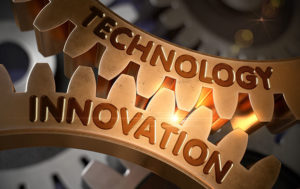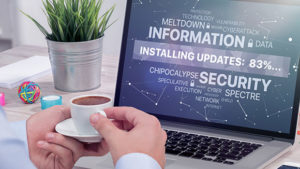
The long-lived and usually reliable mouse could soon be put out to pasture, as Microsoft unveiled this week a new hand-gesture sensor that could allow users to point with their fingers rather than a cursor. The new Digits prototype is part of an effort to create a mobile device that could transform interaction with a computer interface.
This wrist-worn sensor would allow the wearer to control a range of equipment via hand gestures, which could allow it to be an interface beyond the computer screen. Microsoft has been looking at motion control, which has already been adapted for its Kinect for the Xbox 360 game console, as offering an alternative to pressing buttons on a device.
Digits, which was developed at Microsoft’s computer science laboratory at the University of Cambridge with help from researchers at Newcastle University and the University of Crete, could possibly open the door for virtual controllers.
“Digits represents a step forward as a blended reality trend,” said James Canton, Ph.D., of the Institute for Global Futures. “This is the fusion of virtual and physical things and the ability to interact between them.”
Microsoft did not respond to our request for further details.
Changing Interface
Motion control as part of an interface device received a significant boost with the 2006 release of the Nintendo Wii video game console. In 2010, Microsoft — as well as rival Sony — followed up with its own motion control system. While Kinect is primarily a video game controller, Digits could take motion control technology in a new direction.
“Microsoft’s Digits is an interesting example of how technology tends to become generationally smaller and more sophisticated as time passes,” said Charles King, principal analyst for Pund-IT. “In many ways, Digits is similar what Nintendo accomplished with the Wii controller — offering a simple, intuitive device for interfacing with various kinds of content.”
But the sort of content Digits will interface with and the applications the device will inspire are yet to be seen.
“It’s more likely that Digits will replace devices like TV remote controls than computer mice, mainly because mouse functions will be superseded as touchscreen technology becomes as common in PCs and laptops as it is on tablets and smartphones,” King told TechNewsWorld. “That said, technologies like Digits could find a home in a host of personal computing devices.”
Content Will Be Crucial
As with many small leaps forward, Digits could be — at least for now — a solution that has no problem. That could change — and likely will — as developers find uses for motion control and motion control-supported interfaces. There are still challenges to overcome, however.
“This comes back to the 3D problem,” said Canton. “It is great if you are going to the movie and watching it. But the challenge is that we don’t have 3D on many of our devices.”
Digits could change the way people interact with devices such as keyboards. “That interaction today is actually fairly primitive,” Canton told TechNewsWorld.
“The next step in this evolution is telepresence for a more immersive experience,” Canton added. “This is the future of communications, the future of entertainment, and it is the next generation of collaboration. But you still need to have content that is there to interact with, and the Digits interface is only as good as the content that interacts with it.”
Interface Evolution
This chicken-and-egg dilemma will no doubt be resolved as content arrives and users embrace the technology. Already there is other motion control technology on the horizon. Digits is just one of many concepts suggesting that gestures are just a finger snap away.
“At the Intel Developer Forum a few weeks ago, the company introduced its Perceptual Computing SDK which is designed to take advantage of new features supported in next-generation Intel Core CPUs, including stereoscopic webcams that enable gesture controls via 3D webcams,” King explained.
“The initial functions — playing a version of Whack-a Mole with your bare hands, for example — were extremely basic,” he continued, “but Intel noted that functionality would become more sophisticated and powerful over time. In addition, the new Core chips can use the webcams to enable true 3D.”
Microsoft’s Digits is also likely just one step toward greater immersion with the digital experience, and it isn’t too hard to imagine how this technology could itself interface — or be the interface — for Microsoft’s recently announced patent filing for “holograph” technology.
“This could very well be integrated with that,” Canton noted. “The real interesting evolution is going to be when it starts to morph and change — it becomes more dynamic and pervasive. It will allow us to enter virtual worlds. These devices get us closer to the possibilities.”
So maybe not tomorrow, but soon users could be reading articles like this and instead of using the mouse button, they could scroll with gestures.
“We’ll look back in a few years,” Canton suggested, “and say, ‘Wasn’t that primitive?'”





















































